Working Capital Formula: What It Is and How To Calculate It

Working capital is an important indicator of a company’s liquidity and financial health. It’s essential for business owners to know how to calculate and interpret this metric.
This financial metric shows how much cash and liquid assets a company has available to cover day-to-day expenses and short-term debts.
In simple terms, you can calculate working capital by subtracting what the company owes (or its liabilities) from what the company owns (or its assets).
However, there are variations in working capital and how it’s calculated that offer insight into the different levels of liquidity of a business.
In this blog, we’ll break down the concept of working capital, explore its significance in assessing a company’s finances and provide different formulas you can use to calculate it.
What Is Working Capital?
Working capital is a financial metric that shows how much cash and liquid assets a company has available to cover day-to-day expenses and short-term debts.
To calculate working capital, you’ll need to understand your business’s current assets and current liabilities. If you’ve ever created a balance sheet for your business, you may be familiar with assets and liabilities. “Current” refers to one year or one business cycle (whichever is shorter).
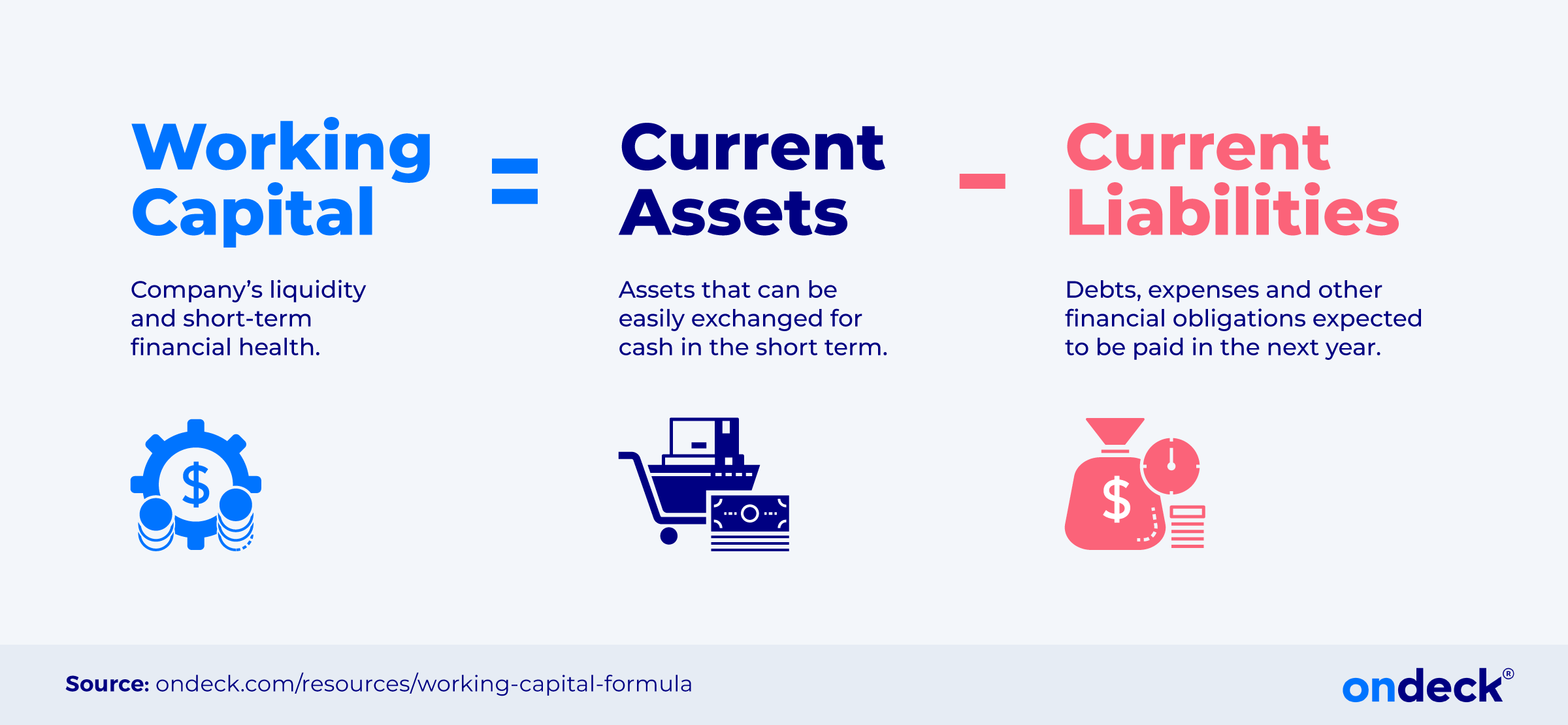
Current Assets
Current assets are anything the company owns that can be converted into cash (liquidated) or used within a year, including:
- Cash and cash equivalents
- Marketable securities (short-term investments such as stocks, bonds and mutual funds)
- Accounts receivable (money owed by customers)
- Raw materials
- Inventory
- Prepaid expenses
Long-term investments, such as real estate, are not considered current assets because they cannot be liquidated quickly.
Current Liabilities
Current liabilities are the company’s obligations or debts that are due within a year. These can include:
- Accounts payable (money owed to suppliers, vendors, utilities, etc.)
- Short-term loans
- Wages
- Dividends for investors
- Income taxes
- Other short-term debt repayments
Working Capital Calculator
A Breakdown of Working Capital Formulas
When it comes to working capital formulas, you can choose from one of several different models depending on how detailed you want the calculation to be.
Net Working Capital Formula
Net Working Capital = Current Assets – Current Liabilities
The net working capital calculation is fairly simple. You just need to subtract current liabilities from current assets to determine the available capital.
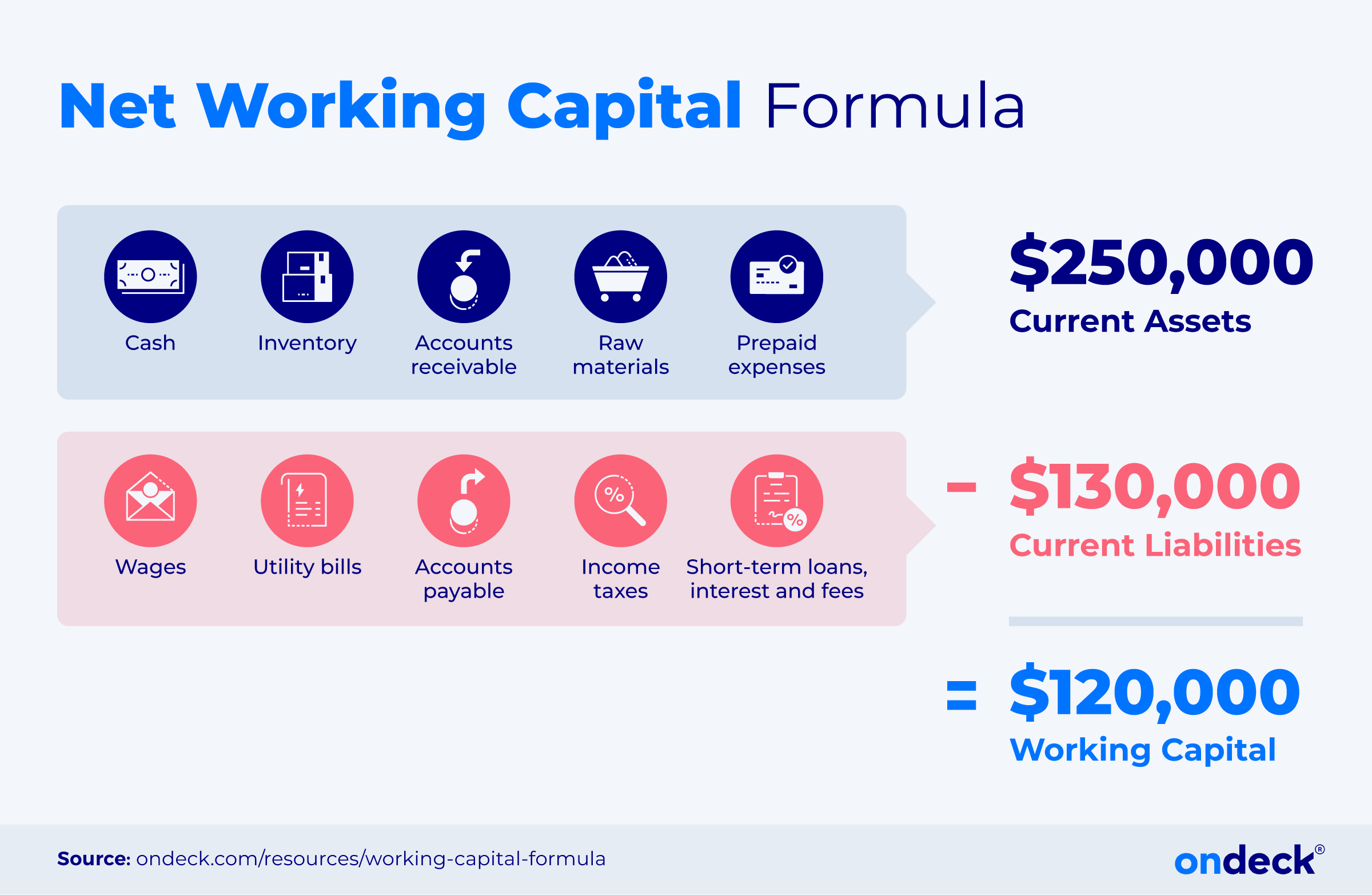
When to use it: This approach allows you to quickly determine whether a company has the cash flow it needs to meet debt and operational demands over the next 12 months.
Operating Working Capital Formula
Operating Working Capital = Current Operating Assets – Current Operating Liabilities
The operating working capital formula considers only the operating assets and liabilities, excluding cash and short-term debt.
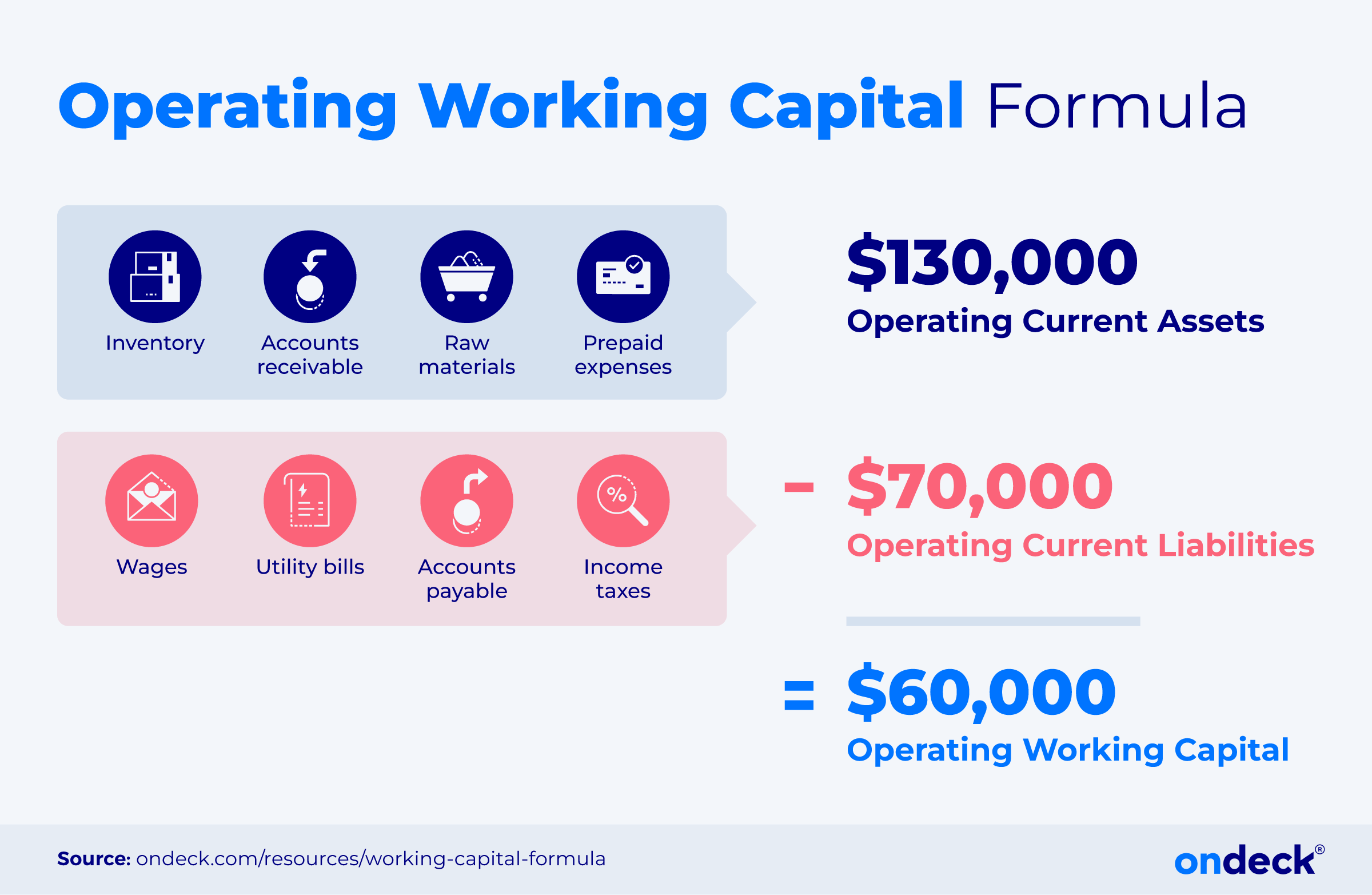
When to use it: This approach provides a clearer picture of the funds needed to run core business operations.
Working Capital Requirement Formula
Inventory + Accounts Receivable – Accounts Payable = Working Capital Requirement
The working capital requirement formula focuses on the components that directly impact the company’s operating cycle — inventory, accounts receivable and accounts payable.
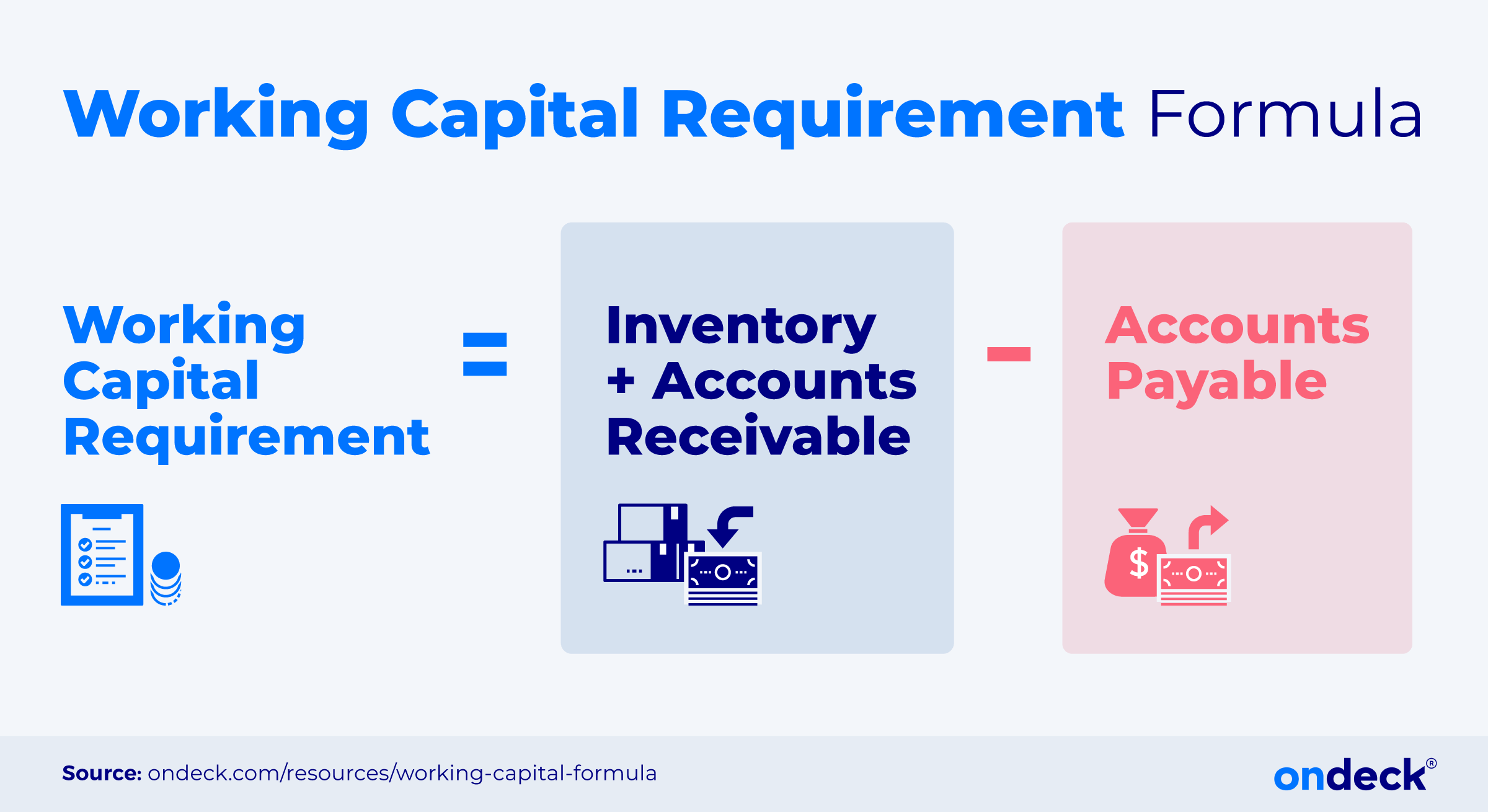
When to use it: This working capital calculation can be used to determine if a business can afford manufacturing materials or inventory to sell.
Working Capital Ratio Formula
Current Assets / Current Liabilities = Working Capital Ratio
The working capital ratio formula measures a company’s short-term liquidity. This type of financial ratio is also called a current ratio. A ratio greater than 1 indicates positive working capital, while a ratio below 1 suggests negative working capital.
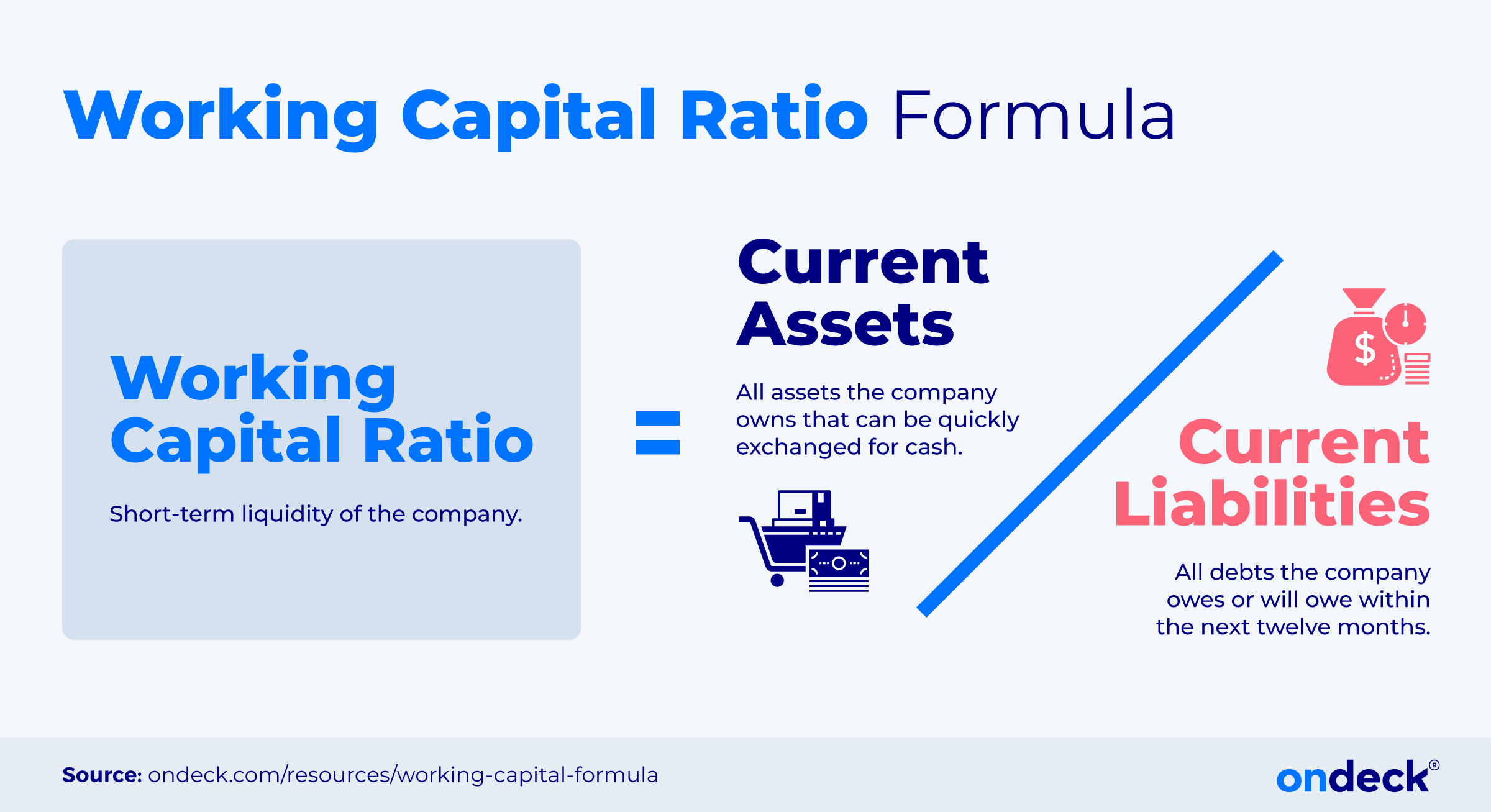
When to use it: The ratio can be used to quickly assess the company’s ability to absorb future unexpected or planned expenses.
Working Capital Change Formula
Working Capital (Current Period) – Working Capital (Previous Period) = Working Capital Change
Tracking the change in working capital over time is crucial. A declining trend in working capital from one accounting period to the next may indicate potential financial distress, while a consistently positive trend demonstrates a healthy and sustainable financial position.
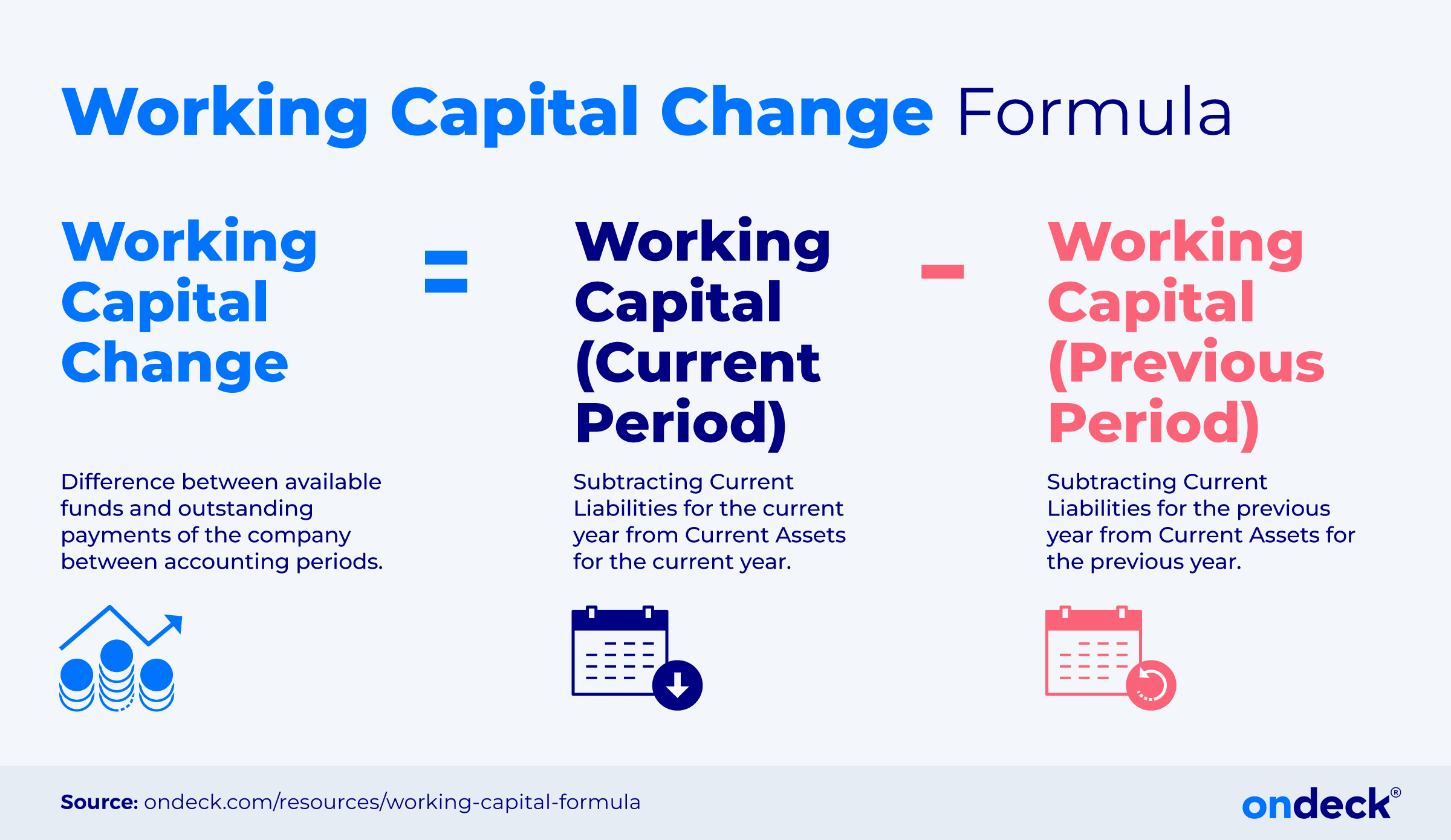
When to use it: This calculation shows how efficient a business is at managing its short-term assets and liabilities over time, allowing business owners to identify a shortage or underutilization of funds.
What Is a Good Working Capital Ratio?
A good working capital ratio generally falls between 1.2 and 2.0.
This range indicates that the company has enough current assets to comfortably cover its short-term liabilities:
| Working Capital Ratio | Interpretation |
|---|---|
0-1 |
Cash flow problems — not enough cash to cover future expenses. |
1-2 |
The business can repay all of its current liabilities while still having leftover current assets. |
2+ |
The company is sitting on capital instead of using it to grow their business. |
However, it is important to clarify that even though an optimal net working capital ratio would be 1.2 to 2.0, this can depend on the business’s industry.
What If You Have Negative Working Capital?
Having negative working capital is not always alarming, as long as there is a reason why the working capital is negative.
There are certain situations where business owners face more short-term liabilities than short-term assets. For example:
- Industries with extended payment terms such as law firms, advertising agencies and publishers that function upon subscriptions, retainers or long-term contracts.
- Cash-up-front businesses like restaurants, retailers and grocers, where business owners need to spend cash before they can deliver products or services.
However, consistent negative working capital may lead to cash flow issues and hinder growth. Small business lenders may help you cover financial obligations until you can improve your working capital ratio. You may want to consider a small business term loan or open a business line of credit if you have liabilities that need to be paid.
Why Is Working Capital Important?
Working capital acts as a measure of a company’s ability to meet its short-term obligations and invest in growth opportunities. It ensures smooth day-to-day operations and can influence a company’s creditworthiness and financial stability.
Working capital is essentially the money a company has for everyday needs. It’s vital because it helps them pay their bills, buy things they need to sell and handle unexpected situations. If a company has enough working capital, it can usually run smoothly, keep its suppliers and customers happy, and grow. But if it doesn’t have enough, it can face financial troubles and might struggle to stay in business.
Sufficient working capital can also help businesses — especially those with seasonal fluctuations — withstand slow periods. So, it’s essential for companies to take working capital management seriously when evaluating the short-term financial well-being of their business.
The Bottom Line.
- If you have a positive working capital, your company’s current assets exceed its current liabilities, allowing it to pay off short-term debts and invest in growth. That said, remember that a very high working capital could indicate you have too much inventory.
- If you have a negative working capital, your company may struggle to meet its short-term obligations using current assets alone. However, this might be unavoidable if you run a cash-up-front business.
This content is for educational and informational purposes only, and is not intended as financial, investment or legal advice.
Find the right funding for your business.
Term loans up to $250K. Lines of credit up to $100K.
No obligations and no hard credit pulls.




